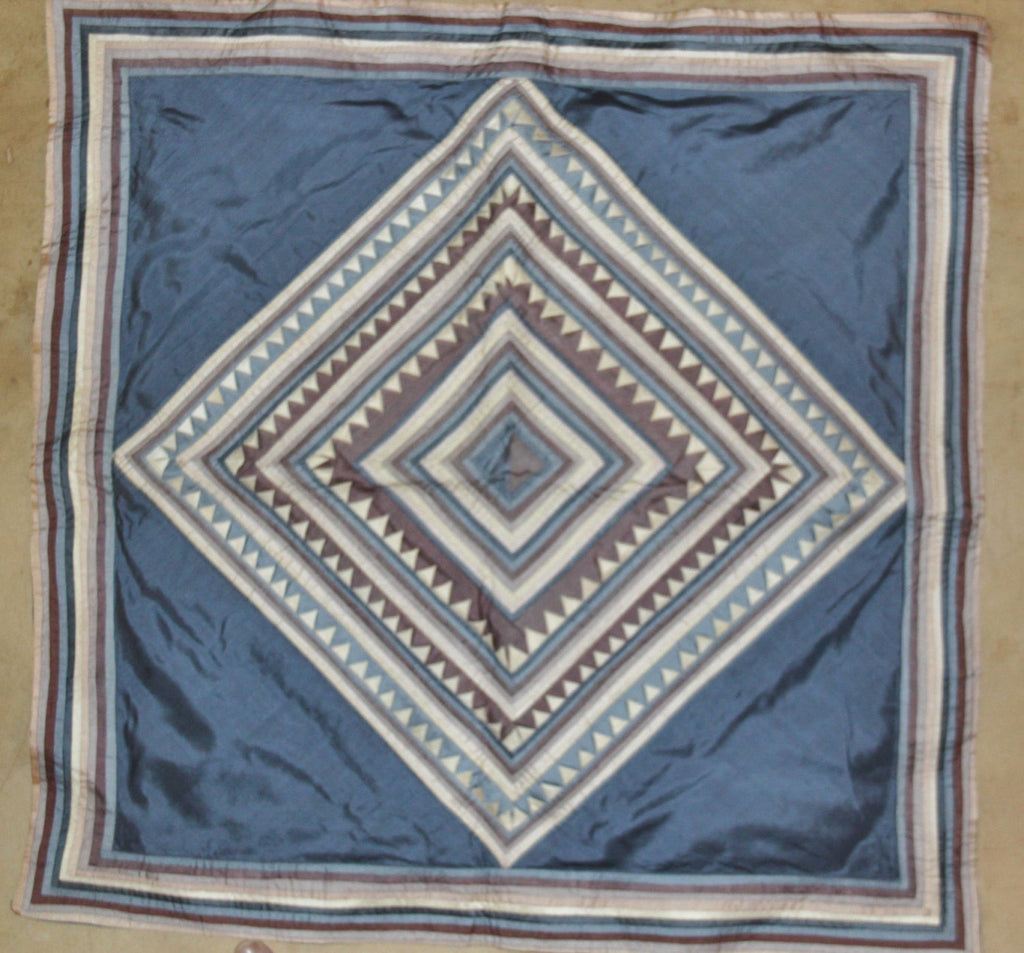
Three Vintage Large Silk Pillow Shams in Homong Patterns, Chiang Mai, Thailand #469
$ 300.00
Vintage Bedding
469. Three Vintage Hand Made Extra Large Silk Pillow Shams in Homong Patterns from Chiang Mai, Thailand. Purchased some 45 years ago from a silk weaving shop in Chiang Mai. My wife originated the design and specific colors. These were then hand made from Thai Silk, at the shop from their own silk worms. Four of these were made, one of these ended up being framed professionally and now hangs as a piece of cultural art in our guest room. These are the remaining three, one of a kind pieces in really great colors. They are in mint condition and a real piece of art and are 19" x 19" in size.
Thai silk manufacturing process: from silkworms to silk fabric: Thai silk, like any other silk in the world is made from the cocoons of silkworms. Silkworms are the caterpillars or larva of the domesticated silk moth (Bombyx mori, family Bombycidae).
The production of Thai silk begins by raising silkworms on a steady diet of white mulberry leaves (Morus alba). This process is known as sericulture. For the first month the silk worms feed on mulberry leaves. Only after the whole month of growing the caterpillars form the cocoon containing the silk.
At this stage the cocoon is taken from the mulberry plant and boiled, to separate the silk thread from the silk worm. Since a single thread of silk from the cocoon is too thin to be used alone, Thai weavers combine more threads to obtain silk thread for handmade weaving. To do this silk weavers hand-reel the threads onto a wooden spindle to produce a uniform strand of raw silk. The process is very labor intensive, as it takes nearly 30 hours to produce a 0.5 kg (around 1 pound) of Thai silk. Did you know that a single cocoon can produce up to 1.5 km (almost 1 mile) of silk thread!
Natural Thai silk can have a variety of colors, ranging from yellow to green. Even though most of the time light golden is characteristic of the region. The next step is to dye the silk thread. In the past, the only dye used was from aniline plants which made the fabrics blue. Today many chemical dyes are used and more colors are possible. One of the most unique characteristics of Thai silk is the color variation depending on the angle you look at silk fabric from. This shimmering appearance is given by the triangular prism-like structure of the silk fiber which allows Thai silk fabric to refract incoming light at different angles thus producing different colors.
Thai silk fabric is then produced with a bamboo loom. The techniques vary depending on the type of silk that is being produced. For instance, plain weave is the simplest method of weaving; the weft thread passes over and under each ward thread, then under and over on the following line. And from here beautiful Thai silk fabric travels directly to local manufactures to use.




